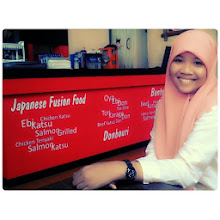COELENTERATA
1. Cnidaria and Ctenophora is classified of Coelenterata because having a large cavity in the center of the body called gastrovasculer function as intestine.
2. Based on his body layer Coelenterata including animal Diploblastic
3. Mention and explain the various layers of the body Coelenterata!
Ø The epidermis (ectoderm): outer layer
Ø Mesoglea: the area between the ectoderm and the endoderm that contain ingredients such as jelly
Ø Endodermis (gastrodermis): layer in
4. The function of the cavity gastrovaskuler is For food digestive organs / intestines
5. 1. Mouth
2. Tentacles
3. Gastrovaskuler
4. Epidermal
5. Mesoglea
6. Endodermis / gastrodermis
6. A. Function tentacles are Protect yourself and catch prey
B. Function of Nematosista is to produce toxins to weaken prey in knidoblas Toxins produced called Hipotoksin
7. A. Respiratory Coelenterata in Diffusion
B. Cnidaria nerve called diffuse nervous system
8. Mention and explain the thype of body shape of Coelenterata !
a. Polip is the generation which can’t move freely, attached to the bottom of substrate and they live as solitary or colony.
b. Medusa is the generation which can swim freely. The shape of medusa like umbrella, which is equipped by tentacles around the mouth.
9. Mention and explain class of Coelenterata! Give the example !
v Class Hydrozoa : members of the class Hydrozoa have small body size. This animal mostly live in the sea. Ex : Hydra, Obelia, and Physalia
v Class Scyphozoa : all members of Scyphozoa live in the sea. Their life cycle dominanted by medusa generation. Ex : Aurelia aurita
v Class Anthozoa : members of the class Anthozoa only ha a polyp shape and has no metagenesis. Ex : akar bahar (Euplexaura marki), sea anemones, sea pens, corals
10. Explain how Cnidaria digest their food !
Small animal attached to the tentacles and on knidoblas, then these cells release toxins, small animals loose and roll with these tentacles immediately bring the animal catches the entry into the mouth → the short esophagus → gastravaskular (extracellular digestion), endoderm absorb nutrients, food scraps in the spit through the mouth.
11. Mention and explain how reproduction Cnidarians!
v Asexual: forming buds
v Sexual: fusion of sperm and egg cells
12. A. Hydra Pictures :
a. Tentacles
b. Mouth
c. Testes
d. Bud
e. Ovary
B. Figure living Obelia :
a) Perleburan egg and sperm cells
b) planula larvae
c) young polyp
d) Adult polyp
e) Hidrant
f) Gonangium
C. Life cycle of Aurelia aurita :
1. Sperm
2. The egg
3. Morula
4. Blastula
5. Planula
6. Young polyps
7. Polyp
8. skifistoma
9. Efira
10. Phase medusa
D. Anthoza body structure :
A. Mouth
B. Pharyngeal
C. Epidermal
D. Mesoglea
E. Gastrodermis
F. Bulkhead
G. Bonad
H. Transverse muscle
I. Muscle basiler
J. Perfect mesentery
K. Leg discs
L. Longitudinal muscle
M. Walls mesenterun
13. Mention the kinds of polyps on Physalia, and its functions!
1. Gastrozooid: polyp to eat
2. Gonozooid: polyp for reproduction
3. Daktilozoid: polyps to capture prey
B. Mention the kinds of polyps in obelia, along with its function!
1. Hidrant: polyp to eat
2. Gonangium: polyp for reproduction
C. Make life cycle scheme Aurelia aurita and Obelia!
Life cycle of Aurelia aurita:
The egg + sperm cell morula → zygote → blastula→ gastrulastage→ planula → attached to the substrate → skifistoma →to form buds after bud → formed like a pile of dishes → skifistoa form strobula → efira → medusa
Obelia life cycle:
The egg + sperm cells → zygote → morula →blastula → grastula→ planula →attached to the substrate → polyp young→ polyp adults (colony hydrozoid)
14. Breathing apparatus in the Anthozoa is sinoglifa the narrow channel ciliated contained in stomodium
15. Mention the five conditions of living coral!
1. The water is crystal clear
2. Seawater temperature 20o C ±
3. Area between 28o C and 28o C south latitude north latitude
4. The depth of ± 35 m of sea water
5. Enough lime content
16. Mention the kinds of Coelenterata and its role for human life!
* Roses sea, sea anemones: as decoration
* Framework bahar root: bracelet
* Jellyfish: as a food and drug
* Coral reefs: place a small fish alive
17. A. Gastrozooid
B. Gonozooid
C. Daktilozooid



